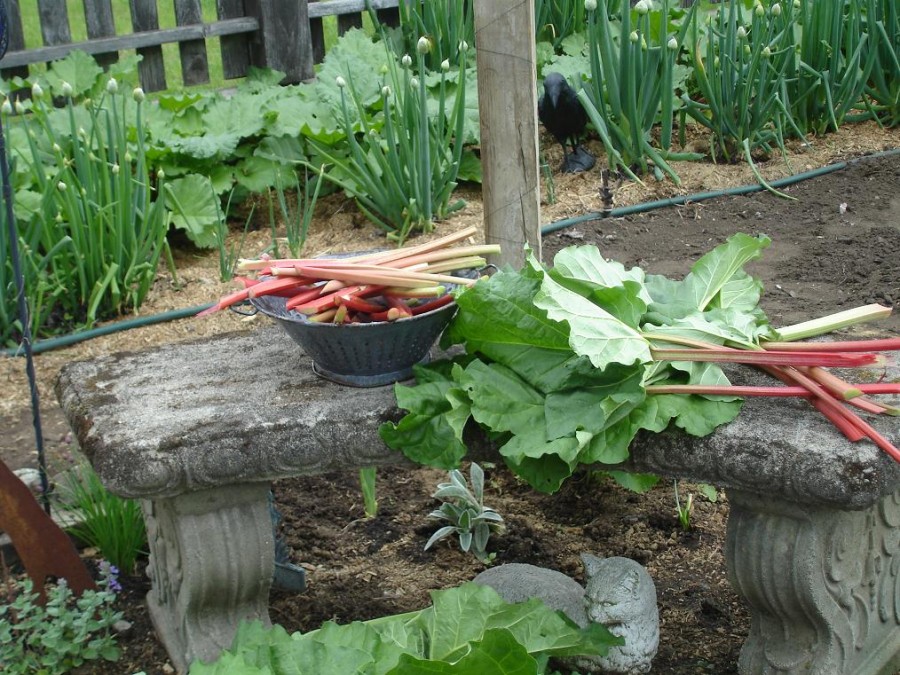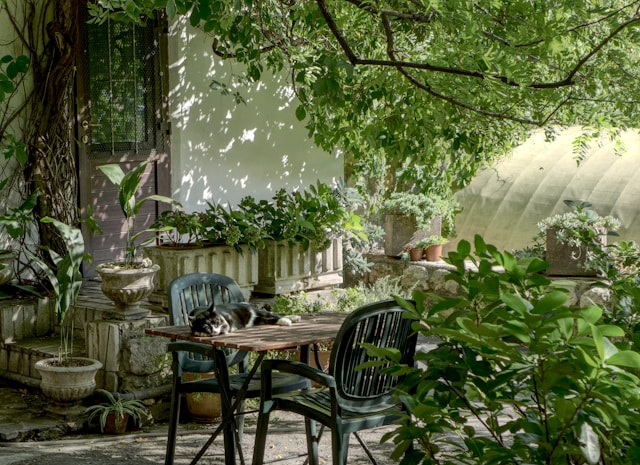When winter finally releases its icy fingers from the land and allows spring to meander in, we in the North Country long for something fresh and green from the gardens.
In an attempt to recover from cabin fever, we push plump pea seeds into the still-cold earth, sow spinach and lettuces with abandon, and plant onions and leeks, kale and collards, carrots and chard in anticipation of Mother Earth’s bounty. Each warm day is spent walking through the small orchard, trying to spot out the first plum, cherry, apple and pear blossoms. We check the asparagus patch and the rows of rhubarb, looking for the first few harvestable spikes. We watch with anticipation as the garlic and Welsh onions spear the soil with their first blades of greenery.
Then, we patiently have to sit back and wait as another blast of cold air whisks in nightfall, and wonder if this late frost will spare the fragile buds and blossoms. We breathe a sigh of relief come early morning when the hoary-white coating of a tell-tale frost has not settled on the rooftop or gardens.
Being in Zone 4/5, the chance of a killing frost can come any time until the end of May, so one must wait till Memorial Day to set out warm-weather crops, flowers, and herbs. It can be an antagonizing wait!
Yet if one knows where to look, there are many things that can be harvested in the fields and woods long before anything is ready in the garden.
Gathering in the Wild Garden
Many folks harvest the furled green fiddleheads of ferns, wild ramps, and wild onions. Nettle leaves, dandelion greens, and wild violet leaves may be picked and stir-fried or steamed. Wild asparagus may be found by seeking out the dried fronds of last year’s plants. Even the early spears of common milkweed or bamboo may now be gathered and cooked like asparagus. Wild orange daylily tubers may be dug up and boiled too!
For medicinal purposes, many plants and roots are ideally harvested in spring, including plantain leaves, comfrey root, wild red raspberry leaves, dandelion root, and sassafras root and bark. These all may be dried now, and set aside in the pantry till you are ready to make tinctures, teas and salves, or use them in herbal remedies. Ah, the magic of spring tonics to restore one’s soul!
Identifying Wild Plants
As a precaution, it is best to make certain of the identification of the wild plants you are harvesting, as this time of year they can all look quite similar.
- Find a friend who is familiar with wild-gathered plants, and tag along with them the first few times you go foraging.
- Consult a field-guide to wild edibles in your area, or take a class if one is offered through the county extension office in your area.
- Also, steer clear of plants that grow alongside the road or in a well-maintained lawn, as they can be contaminated.
Nettle Tea and Wild Violet Jelly
Of all the wild edibles, my favorite things to gather are nettles for tea, and wild blue violets for jelly!
For Nettle Tea, I gather the whole tips of the Nettle plant as it emerges from the ground and has a few sets of leaves. I simply pinch the top off (yes, it stings a little bit!) and make sure I have a few pairs of leaves along with the top.
When you’ve gathered all you want, take them home, rinse them off and drain well. Pat them dry and lay out on your dehydrator trays and dry till crisp. Then carefully crumble the leaves off from the stems… do not powder them, just leave them as whole as possible… then store in a glass jar with a tight-fitting lid.
I like to combine the Nettles with a bit of dried Mint and Wild Raspberry Leaves… it’s become my favorite (free) tea and is also good iced! I fill a single-serving size wire-mesh tea ball or a pinch-style “tea” spoon loosely and steep for about 10 minutes for a delicious cupful. Sweeten with agave, honey or stevia if desired.
To make Violet Jelly, gather about 2 cups of packed Violet petals. (Make certain that they are not gathered from a lawn that has been fertilized or treated with herbicides). Rinse the flowers well, drain, and then cover with 2 cups of boiling water. Cover tightly and let sit overnight.
The next day, strain out and discard the violets, reserving the liquid. Add 4 cups of sugar and ¼ cup lime (or lemon) juice plus the reserved Violet water in a stainless pot, and bring to a boil, stirring well. Add a box of powdered pectin, stirring well, and bring the mixture to a full rolling boil; continue boiling for one minute, then remove from heat and pour into clean, sterilized jelly jars. Top with lids, wiping rim if necessary, and place in a boiling water bath for 10 minutes.
This is lovely on toasted English Muffins or used in Thumbprint cookies!
Not only is it frugal to harvest the bounty of Mother Earth; it is also fun to learn and appreciate the foods our fore-bearers gathered… often as a necessity to supplement their everyday diet or medicine cabinet. There are so many books and online articles pertaining to wild foods; I encourage you to seek them out and experience a less- common form of gardening!
About the Author


I loved your article Laura!! The pictures are superb!!